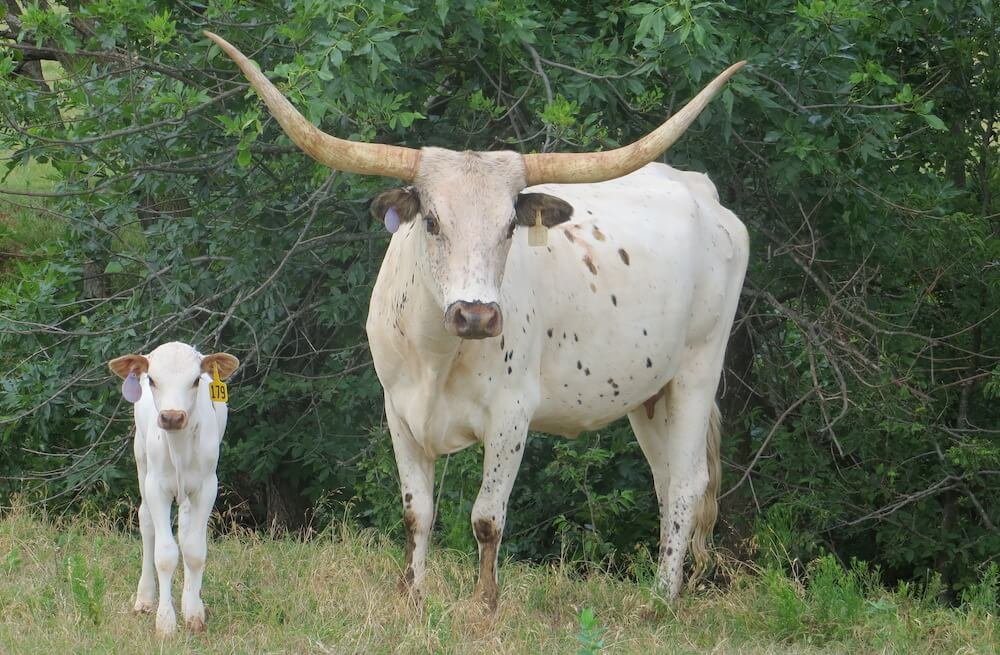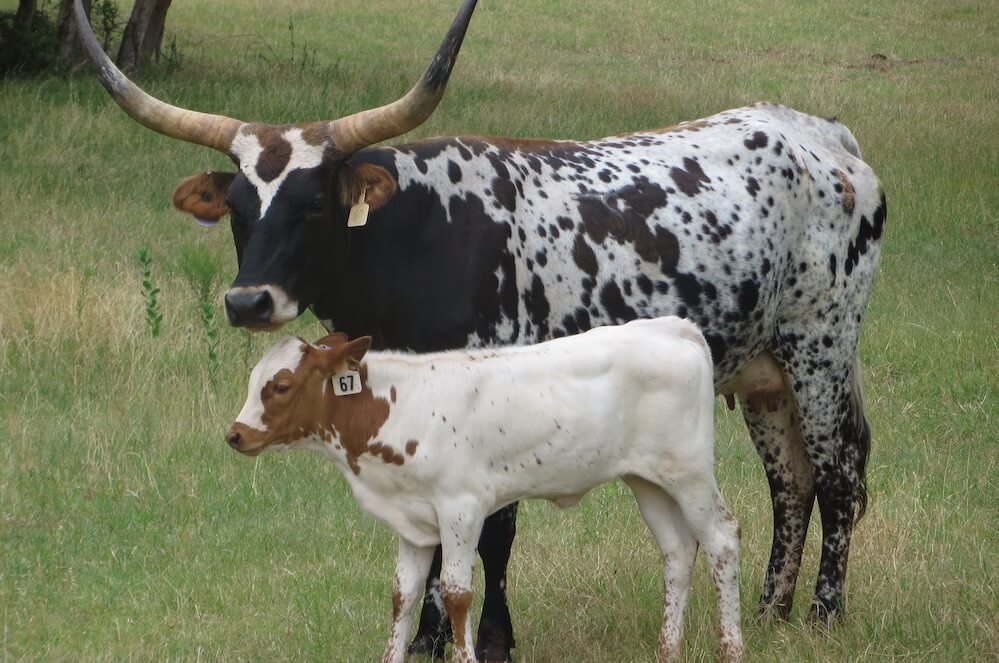Our Longhorn Herd
Explore the images below to meet our herd of Texas Longhorns, each uniquely bred and raised with care on our family-operated ranch.
Fun Facts about Longhorns:
Historical Significance and Survival
The ancestral Spanish cattle were first brought to North America by Christopher Columbus in 1493 to the Caribbean island of Hispaniola, traveling from Spain to the West Indies, then Mexico, before arriving in Texas and Nebraska.
The Texas Longhorn's population plummeted to near extinction in the 1920s and was revived with guidance from the U.S. government.
Texas Longhorn cattle sales post-Civil War helped Texas recover from an economic depression.
They didn’t become the Texas state large mammal until 1995.
They are not related to the English Longhorn and are sometimes mistaken for Watusi cattle.
The breed is also referred to as the American Longhorn.
The longhorn cow is famous, in novels like “The Longhorns” by J. Frank Dobie, who was instrumental in saving the breed from extinction.
Physical Characteristics and Adaptability
Both male Longhorn bulls and female heifers have horns.
They come in all colors and patterns, including spotted.
Longhorns can forage on brush and survive days without water, unlike other cattle.
Calves begin sprouting horns by the age of 3 weeks and are known for their hardiness, standing quicker, and being popular in crossbreeding.
The widest horn measurement spans more than 10 feet.
The heaviest steer tipped the scale at 2045 pounds at 10 years old.













